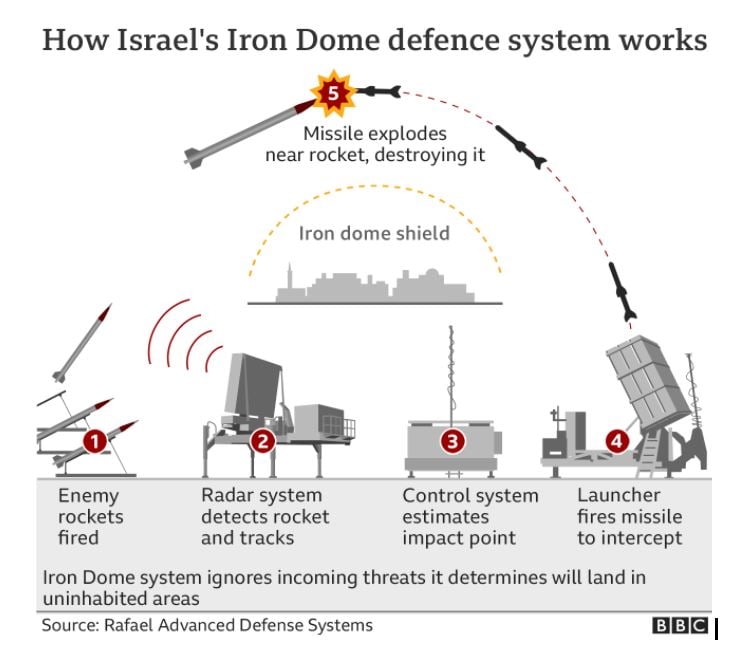UPSC Articles
INTERNATIONAL
Topic:
- GS-2: Important International events; Effect of policies and politics of developed and developing countries on India’s interests
- GS-3: Science & Technology
Israel’s Iron Dome rocket defence system
Context: Israeli Defence Forces(IDF) said that in recent violence between Israel & Palestine, Hamas has fired more than 1,500 rockets from Gaza all the way into Israel which has been intercepted by Iron Dome.
What is Iron Dome?
- Defence System: Iron Dome is a multi-mission system capable of intercepting rockets, artillery, mortars, aircraft, helicopters and UAVs over short ranges of up to 70 km.
- Versatility: It is an all-weather system and can engage multiple targets simultaneously and be deployed over land and sea.
- Developers: Iron Dome is manufactured by Rafael Advanced Defence Systems Limited and has been in service with Israeli Air Force since 2011. The radar system was developed by Elta.
- Context of Development: Its development was prompted after a series of rocket attacks on Israel by Hezbollah and Hamas in the 2000s. In the 2006 Lebanon war, around 4,000 rockets were fired on the northern parts of Israel resulting in the death of about 44 Israeli civilians and evacuation of around 250,000 citizens following the development of the system was taken up.

Source: BBC
How does it work?
- An Iron Dome battery consists of a battle management control unit, a detection and tracking radar and a firing unit of three vertical launchers, with 20 interceptor missiles each.
- The interceptor missile uses a proximity fuse to detonate the target warhead in the air.
- The Iron Dome is deployed in a layered defence along with David’s Sling and Arrow missile defence system which are designed for medium- and long-range threats.
- One of the system’s important advantages is its ability to identify the anticipated point of impact of the threatening rocket, to calculate whether it will fall in a built-up area or not, and to decide on this basis whether or not to engage it.
- This prevents unnecessary interception of rockets that will fall in open areas and thus not cause damage, the paper states.
- The system has intercepted thousands of rockets so far and, according to Rafael, its success rate is over 90%.
- The I-DOME is the mobile variant with all components on a single truck and C-DOME is the naval version for deployment on ships.
What are the limitations of the system?
- The system has performed very well so far. However, the system can see limitations when it is overwhelmed with a barrage of projectiles. The system has a ‘saturation point’.
- It is capable of engaging a certain (unpublished) number of targets at the same time, and no more. Additional rockets fired in a crowded salvo could succeed in breaching defences and cause damage.
- Several assessments suggest that Hamas is developing mitigating strategies including lowering the trajectories of the projectiles while also continuing to accumulate thousands of rockets with improved precision.
- One of the possible limitations is the system’s inability to cope with very short range threats as estimates put the Iron Dome’s minimum interception range at 5-7 kilometres.
- The other factor is the cost of interception is high. The cost of the interceptor missile is about $40,000-50,000.













